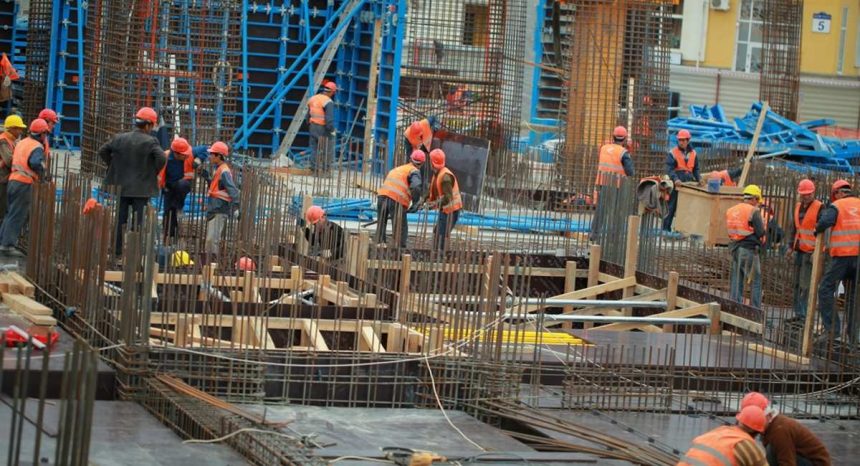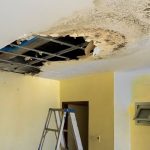The increasingly-powerful CFMEU claims to have exposed the country’s tradie shortage as a “myth” peddled by employer groups looking to “exploit and undercut workers”.
In a recent analysis of Jobs & Skills Australia occupation and internet job advertisements data, the group claims the demand for tradies has been greatly exaggerated by organisations looking to further the nation’s migration agenda.
According to the results, the vast majority of building and construction-related jobs, including plumbers, tilers, fencers, carpenters and home improvement installers, have a vacancy rate below 1 per cent.
In February of this year, there were just 56 ads for plasterers, a profession employing 27,600 people nationally, and only 111 ads for bricklayers, which employs 30,000 people.
CFMEU National Secretary Zach Smith says the low vacancy data has exposed the “blatant lie”.
“Master Builders is pushing a pathetic fiction so they can access easily exploitable migrant labour and undercut the wages and conditions construction workers deserve,” said Mr Smith.
“These groups should be absolutely ashamed of pushing complete bullshit that is designed to hurt Australian workers.”
The new figures come after several reports, including one from independent review taskforce BuildSkills, pointed at tradie shortages as the main reason holding the industry back from delivering on Albanese’s 1.2 million home builds over the next five years.
According to BuildSkills, the construction industry as a whole would need 90,000 extra construction workers to enter job sites by as early as July this year, with major infrastructure projects like Melbourne’s Rail Loop and Western Sydney Airport set to fall behind schedule due to tradie shortages.
Late last year, a market review from the government-backed Infrastructure Australia agency also found that trade and labourer shortages were growing at the fastest rate of any industry and claimed they would remain acute until 2025.
A report published in December by the group predicted a deficit of 131,000 full-time workers in the construction industry by the end of 2024.
But now Mr Smith says the most in-demand jobs aren’t actually the tradies on the tools but the construction managers watching over the workload.
“The most appalling part is this myth isn’t just being peddled by exploitation-hungry employer associations, it’s also coming from within BuildSkills Australia, which is supposed to be an impartial source of information for the federal government,” he added.
Can migrant workers prop up construction?
The CFMEU’s latest findings come only days after a draft of what skills will likely end up on Australia’s core priority visa skills list was released to the public.
The core skills list sets out which workers are eligible for the new Skills in Demand Visa, which replaces the Temporary Skills Shortage Visa in late-2024, with the program considered a fast-track for workers the country needs urgently.
This draft list, prepared by independent body Jobs and Skills Australia, surprised many by putting yoga teachers, dog handlers and jewellery designers above trades such as painters, roof tilers, bricklayers, and stonemasons.
Those trades were put on a list requiring “more consultation”.
In a submission last month, BuildSkills said that without a boost to migration incentives, the current strategy was only making matters worse.
“Migration is supplying fewer workers to the construction trades than it is adding to the broader population.” read the submission.
“As a result, a large share of the existing labour force must be diverted to the construction of the houses and other assets needed to support these new residents, exacerbating rather than ameliorating trade shortages.”
By analysising the proportion of migrants who ended up in construction jobs over 10 years, BuildSkills estimates that construction occupation were 1.2 per cent of net overseas migration.
Executive Director Robert Sobyra said that lifting the percentage to only 1.5 would take the number of migrant construction workers from 2700 to 3500 and allow the intake to “break even” on contributing to housing supply rather than demanding.
“We’re just saying, if it’s a building trade, let them in,” he said in reply to the draft.
With calls for the addition of tradies to the visa pathway dominating headlines last week, Master Builders CEO Denita Wawn questioned whether the CFMEU’s notoriously anti-immigration agenda had influenced the draft.
“I know that the CFMEU are anti-immigration, I would hope that they have not had undue influence in the decision making of the government,” she told reporters last week.
“We share their view at the CFMEU that we need to we need to focus on Australians and getting more Australians into our great industry. But we know that just focusing on Australians is not enough.
“I would have thought it was a good opportunity for them to increase membership, so I’m, I’m bewildered by the reason why they are so anti-migration, when we have actually built this country through migrants.”







